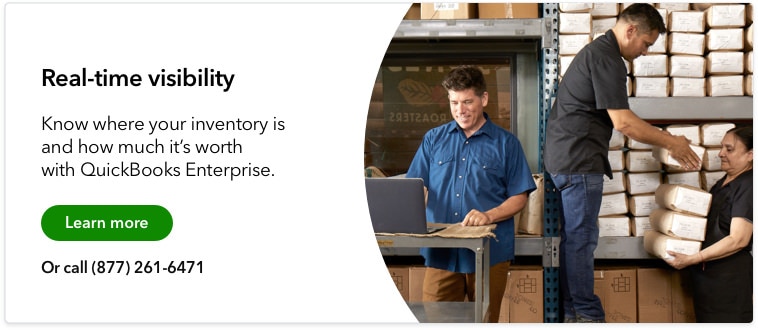While product returns may not be the ideal purchase outcome, they are an inevitable part of doing business. With the rise of ecommerce shopping and more forgiving return policies, product-based companies are experiencing high average return rates.
Retailers today expect about 16.6% of customer purchases to be returned, and the number is considerably higher at 28% for ecommerce purchases. For companies to succeed in the current market, product returns management can no longer be approached ad hoc, but as an increasingly critical part of the fulfillment process.
What is returns management?
Returns management is the fulfillment process that deals with products that were successfully delivered to the customer but are returned to the company.
The process starts when a customer requests a product return and is completed when the product has been collected, processed, and either disposed of or restocked back into inventory.
Whether the return is because of damage, order or delivery exceptions, or the product is no longer needed, returns management determines the best way to deal with the product that satisfies customers and minimizes costs to the company.
Returns management vs. reverse logistics
Returns management and reverse logistics are two supply chain terms often confused with one another.
Reverse logistics is a broader term, referring to any movement of products in the opposite direction of the standard supply chain. For example, this can be a product shipped back from customer to the seller or from wholesale distributor to manufacturer.
These shipments aren’t necessarily product returns. Reverse logistics can also deal with sending empty crates, pallets, or other packaging back to their point of origin for reuse.
Returns management, on the other hand, is part of the reverse logistics process. It similarly moves products from customers to companies, but specifically for returned purchases. Some companies also include related functions in their returns management process, like refurbishing or recycling parts.
Regardless of the exact scope of tasks, the goal of returns management is to process returns most efficiently and cost-effectively as possible for both the customer and the company.
What an effective returns management process looks like
Any company that sells products will inevitably have to deal with returns. While managing returns depends on how the product was purchased, whether in-store or ecommerce, there are some necessary steps to keep in mind. The following is what an effective returns management process looks like.
Customer receives product and requests return
All returns start with a customer who no longer wants their purchased product. The product may be damaged, not as expected, or no longer needed. Whatever their reason, customers initiate the return or exchange process through chat, email, or phone call.
Company approves or disapproves the return request
The company collects real-time data about the order, including customer information, product SKU, and purchase date. The return request is verified against the published return policy, after which the company will approve or disapprove the return.
Approved return is shipped back to the company
Approved product returns must then be shipped back to the company. Shipments are either facilitated by the company or a third-party logistics provider, who schedules a pick-up from the customer’s delivery address, or the customer who must secure a shipping return label and bring the product to a drop-off location.
Product is delivered to the warehouse facility
Returned products are sent to the assigned warehouse facility, where they are initially received, marked as a return, and assigned for later inspection.
Product is inspected for processing
All returned items are inspected for any damages, missing parts, and undergo overall quality control checks. This helps determine any further steps needed for repair, refurbishing, recycling parts, or directly restocking back into inventory.
Returns and any necessary refunds or exchanges are initiated
All returned products in need of repairs, refurbishing, or recycling are sent to the appropriate stations, while products in good condition are stocked back in warehouse storage for resale. In this step, there is also required documentation to update the inventory count, as well as process any refunds or exchanges for the customer.
Considerations for your returns and refund policy
An important part of returns management is having a fair returns and refund policy in place. By publishing the details of what products are accepted and how a return works, both companies and customers have a clear understanding of what to expect throughout the process.
The first consideration is to create a returns and refund policy that centers around the customer experience. Some companies hesitate to offer free returns for fear of damaging their bottom line. However, studies show 66% of customers look for returns policies before making a purchase, and 95% would shop again with retailers that offer a good returns experience.
While returns don’t generate the expected profits on the first purchase, a favorable policy can ensure repeat business and higher customer retention rates.
That said, returns and refund policies are also a good way to manage customers expectations and protect against fraudulent returns. For example, a company can indicate what products it will refund (e.g., items that haven't been washed or don’t break accepted hygiene protocol). Other common policies include requiring the original packaging, or only accepting returns within a certain number of days after delivery.
Returns and refund policies should also include how customers can request a return, how they can get their return shipping labels, and approximately how long the process will take.
Best practices for your returns management process
In addition to having a clear returns policy, there are several opportunities to improve a returns management workflow. Apply the following best practices to ensure your company’s returns are handled as efficiently as possible.
Process customer returns quickly
Returns management is not just an order fulfillment operation, but a customer service one as well. Responding to return requests and sending refunds or replacements as quickly as possible greatly impacts customer satisfaction. Even if your company is moving products along the returns process, it’s important to prioritize customer refunds and send them notifications at every step.
Develop a cost-effective returns strategy
With all the additional shipping and restocking efforts, returns come at a high cost to companies. Keep returns from becoming a financial liability by finding opportunities to incorporate returns into your existing systems. For instance, retailers can accept in-store returns to save on shipping costs. Apparel and footwear brands can publish sizing charts to reduce customer fit issues.
Analyze product returns
Every return presents an opportunity to improve your customer knowledge and product selection. Take the opportunity to ask customers the reason for their return and if there are ways you could have enhanced the experience.
Business management solutions like QuickBooks Enterprise can also offer aggregate returns data, revealing themost often returned product types, product manufacturers, return rates, return cycles, and more. These factors shed insights into any problem areas or products that need to be further investigated in order to prevent future returns.
Automate and track key systems
Returns management involves a number of moving products and routine tasks. Automations can be used to instantly route return requests to the appropriate teams, while tracking can notify customers about important return shipment updates.
How QuickBooks Enterprise makes your returns management more efficient
Returns management is much easier and more efficient with a dedicated software tool. QuickBooks Enterprise offers a flexible retail platformthat combines all your inventory and order data on one dashboard. Whether you sell in-store or through an ecommerce store, built-in integrations automatically update inventory records after every sale or product return.
Inventory can also be assigned categories and expiration dates, giving customers all the information they need to reduce misunderstandings and unnecessary returns.
QuickBooks Enterprise also generates customizable reports for all sales transactions, including which products generate the highest profit and which are most frequently returned. These insights allow you to remove low-performing products from your inventory and maximize earning potential.
Final thoughts
Returns management is an increasingly important part of business operations, whether you run a brick-and-mortar or ecommerce business.
While product returns entail extra costs and resources, they also present an opportunity to deliver a standout experience and foster increased customer loyalty.
Ultimately, a fair returns and refund policy is proven to attract more customer sales and build a competitive advantage that effectively differentiates your company from other retailers.












